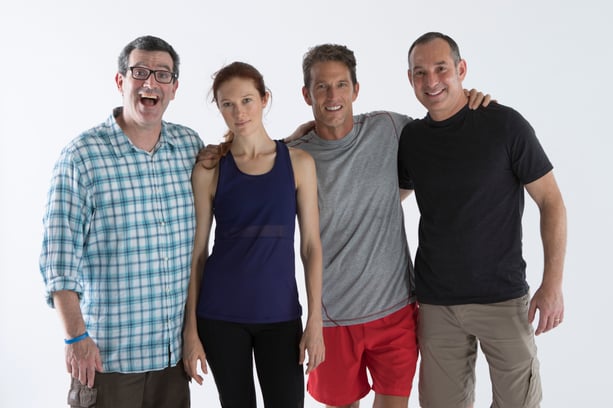Somebody once told me that when you don't know what you're doing walk around with a clipboard so you look like you know something.
After directing many photo shoots for clients, I can now say I know a lot more about what I'm doing. However, I still like to walk around with my clipboard.
Here are my 5 tips for making a successful and smooth photo shoot:
- Hire a professional photographer: Sounds obvious but many people feel that any photographer may do. The key is to find someone who is a specialist. Product shots can be different than people shots. Indoor shots are different than outside location shots. Getting a photographer who has credentials and a portfolio similar to the type of shoot you want to do is essential. Also, ask how many hours in the day the photographer will be available for so you understand if there will be overtime charges if your day runs into the evening.
- Get a quote: Another obvious point, but to get the right quote you need to know how long you anticipate the photo shoot to take, how many shots you expect from the photographer, where the shoot will take place (i.e. in a studio, on location), who will do the re-touching, who will supply additional materials if necessary (i.e. lights, backdrops), and who will ultimately own the images. Some photographers are happy to hand over all the shots while others may charge you based upon a period of usage, like 5 years.
- Plan the details: This is where the clipboard comes in handy because you're going to want to carry around a shot sheet. This is a listing of the types of shots you want along with angles and any necessary close-ups, or action poses. This helps the photographer plan out the day and helps you ensure you capture what you need. It's also a discussion point with the photographer so he/she can understand how wide or narrow of a shot may be needed. And on that sheet, it's also good to plan out timing for the day so you know if you're getting behind schedule and risking a charge for extra hours. And don't forget to plan for a lunch break. Nobody wants to be cranky on the day of a shoot.
- Hire more professionals: It's not just the photographer who is critical but models, make-up artists, wardrobe and prop stylists are critical, too. It may seem like overkill but these people know how to make your shots pop. For example, we just did a shoot involving athletic fitness. We needed models posing in various workout clothes on different fitness machines. Our wardrobe stylist worked with us to understand the look and feel we wanted based upon our target audience and she went out and sourced all the clothes to fit a certain palette style. She dressed the models and ensured there were no wrinkles, proper accessories were in place, and colors didn't clash with the brand. She even returned unused clothing when the shoot was done. And for the models, we always emphasize going through legitimate agencies who ensure the models actually look like their headshots and show up to the shoot. It's an expense, but worth it. Can you tell who the real models are in the picture below? They surely add a level a cachet to the image and make more sense than using Bob in Accounting to dress up for the day.

- Lighting: One of the most important elements of photography is proper lighting. Your photographer should be responsible for lighting your shot, but may need some help and guidance. For portraits, are you after a soft, even light, or dramatic, directional lighting? Provide a sample of the look you desire. For building photos, make sure you plan for the best time of day to shoot each location. A building will look very different depending on the sun’s direction, so scope it out or have someone local take quick photos morning, noon and late afternoon so you and the photographer can plan accordingly. Additionally, ask the photographer to “tether” the shots. Tethering is a term used in the photo industry for connecting a camera to a computer. Trying to view tiny images on the camera-back just doesn’t cut it. Being able to view images on your computer right at the shoot will save you many headaches down the road and avoid the blame game.
That's photography 101 in a nutshell. If you ever have questions on planning your photo shoot, we're happy to help. Feel free to contact us for a free consult below:







